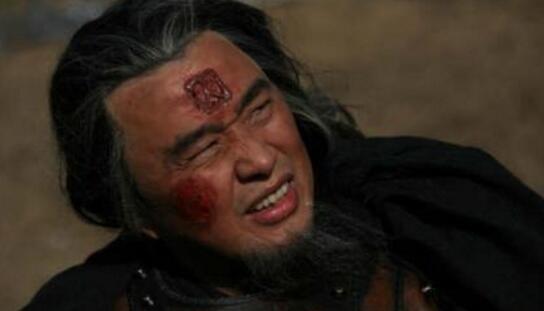Ancient hierarchies were strict, the laws were harsh, and criminal law had existed since ancient times. In order to punish criminals, the rulers invented a variety of criminal laws, the earliest of which is the ancient five punishments, which have been recorded since the Xia Dynasty, and although there have been changes later, they are mainly based on the five punishments. The lightest punishment of the five punishments is the ink punishment, also known as the tarnishing punishment, which is said to be the lightest punishment, which is relative to the other four punishments. Ink punishment, simply put, is to carve a pattern or text with a tool on the body of the criminal, and then paint ink as a mark to punish the criminal, and the ink punishment cannot be scrubbed off, and will follow the criminal for a lifetime. This is intolerable for women who value beauty, but it has now become a popular culture that can be seen in the streets.

Ink punishment first appeared in the Zhou Dynasty, belongs to one of the five punishments, the first is to use a knife to engrave words on the skin of criminals, and then coated with ink or toner, after the wound scabs, the ink will be embedded in the skin, can not be scrubbed, the criminal will carry this shame for life. The general inscription is on the facial skin, and the facial skin nerves are more distributed and more sensitive, so many prisoners are in unbearable pain. Moreover, there were no disinfection measures in ancient times, and many convicted criminals would eventually die of facial infections. At the same time, because he will carry the mark of a criminal all his life, it will also have a great impact on the psychology of criminals.
In ancient times, ink punishment was the most common and longest-used type of criminal law. In the Zhou Dynasty, there were "five hundred ink punishments", that is to say, there were as many as five hundred crimes to be punished with ink, and ordinary people would be sentenced to ink punishment if they made a small mistake. According to records, at the beginning of the Han Dynasty, Yingbu, who was named the king of Huainan, violated the laws of the Qin Dynasty in the late Qin Dynasty and was sentenced to ink punishment, and later records were called Tuobu, such as the "Biography of Tuobu Lie" in the historical records. The history of ink punishment is extremely long, and it took more than 2,000 years until the end of the Qing Dynasty to revise the law and abolish the ink punishment. During the reign of Emperor Wen of Han, although the five punishments were abolished, other criminal laws such as ink punishment have always been used as lynchings, so the historical development of ink punishment is relatively long.
In the Zhou Dynasty, criminals who were sentenced to ink were often punished with hard labor or acting as gatekeepers for the nobility. Because these criminals have marks on their faces, no matter where they go, ordinary people dare not take them in, and those criminals have nowhere to escape throughout the country. During the Qin Dynasty, many criminals who were sentenced to ink would do hard labor and build the Great Wall. During the Qin Dynasty, there was a saying that "Tuowei Chengdan", that is, the people who were appeased had to build the Great Wall in the morning, and at the end of the Qin Dynasty, most of the main forces of the uprising were people who were tortured by ink.
In the later development, ink punishment gradually changed from knife carving to needle prick. In the Northern Song Dynasty, all ink punishments were changed to needle, and the parts and marks of ink punishments were different according to different crimes. For example, thieves are punished with ink behind their ears; exiled criminals are placed in squares in conspicuous places such as the forehead; and in the case of rods, the stings are arranged in circles. In this way, the crimes committed are known according to the ink punishment part and the imprint, which is easy to manage.
Ink punishment is a kind of destruction of appearance, so many women in ancient times could not tolerate ink punishment, and even sought death because of ink torture. Of course, there are exceptions to everything, and although Shangguan Wan'er of the Tang Dynasty was tortured by ink, she created a makeup as a result. At first, Shangguan Wan'er was deeply loved by Wu Zetian, but in the East Palace Incident, she offended Wu Zetian and was sentenced to ink punishment. It is to engrave the inscription on Shangguan Wan'er's forehead, which must have affected the beauty. However, Shangguan Wan'er Hui's orchid heart painted a blooming plum blossom at the place of the inscription, which not only obscured the place of the inscription, but also added a little charm, which was particularly beautiful. Other women also imitated this makeup, which became a popular makeup at that time. Of course, more women who have been sentenced to ink have no good end, and they will carry the mark of a criminal throughout their lives, and they will be rejected by others wherever they go.
Although ink punishment was abolished, it has become a popular culture in modern times, that is, tattoos, also known as tattoos. Tattoos are almost as old as the history of ink punishment, and people tattoo various patterns or words on their bodies to express their various hopes, sustenance or warnings, such as the story of their mother-in-law's tattoo. Ancient criminal law gave rise to a negative view of tattoos, but in many cultures tattoos are a status symbol. Nowadays, tattoos have become popular and have become a trend culture, and there are many tattoo shops on the street. Of course, not everyone is suitable for tattoos, and it must be done according to their physical condition.